Jeju Island in Korea is a popular getaway for thousands of people looking to escape the hustle and bustle of the mainland.
It has a bit of everything: Delicious food, cascading waterfalls, an abundance of hiking options, caves, beaches, and so much more.
I spent 5 days in Jeju Island and had high expectations before arriving. While Jeju is often referred to as the “Hawaii of Korea,” it’s certainly nothing like Hawaii.
This post details everything you need to know to plan the perfect Jeju itinerary. It includes the best things to do, places to go, and where to stay during your Jeju trip.
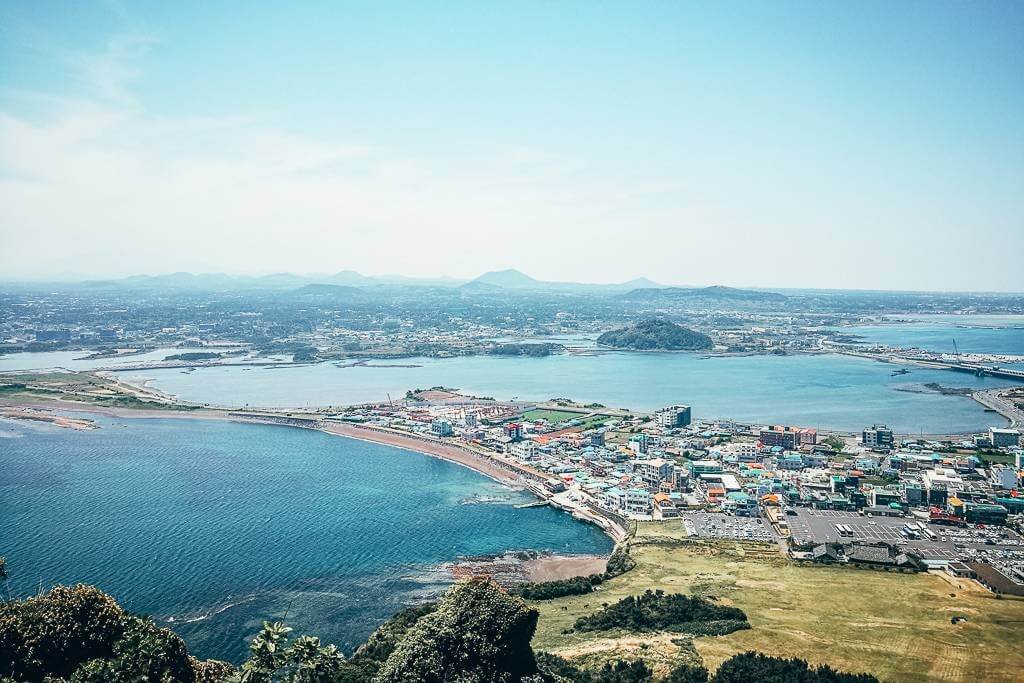
Quick Navigation
How to visit Jeju Island
There are 3 main areas of Jeju Island: Jeju City, Seogwipo, and Seongsan.
Deciding where to stay in Jeju is often the most challenging part of organizing a trip, as the island is massive!
Jeju City is on the north of the island and is where you’ll fly in. It’s a great base if your time is limited. But it does have a city vibe, and the areas down south are way better – in my opinion!
Seogwipo is arguably the best place to stay. It’s found on the south of the island and is close to the top attractions in Jeju.
Seongsan is where you’ll find the famous Seongsan Ilchulbong on the east coast of Jeju. It’s great if you’re looking for a quieter place to stay, yet you still want to be close enough to the attractions on your Jeju itinerary.
Top tip: If your time is limited, I recommend that you book a tour where you have a set itinerary and all your transportation is pre-booked. Tours like this Southern Jeju Island Tour allow you to visit the best places in Jeju in one or two days.
Getting around Jeju in 5 days
The island is much bigger than you realize. It takes over an hour’s drive (by car) to get from one side to the other. With public transport, it’s even longer!
During my 5 days in Jeju, I used a mix of public transport and tours.
Driving in Jeju
The best way to plan your Jeju itinerary is to rent a car, as this gives you the most flexibility. The only requirement is to have your passport and international driving license that has been issued prior to your visit to Korea.
Koreans drive on the right-hand side of the road, so it can be challenging if you’re not used to this. The street signs are also in Hangul (Korean writing), and Google Maps doesn’t work properly in Korea. These were the reasons I decided not to rent a car.
Jeju by bus
Instead, I chose to use public transport to get around. It was easy enough, and I didn’t have to wait too long for buses to arrive.
A direct bus (Jeju Airport Limousine) goes from the airport to Seogwipo in 2 hours. From Seogwipo, you can easily find buses that go to the east or west side of the island.
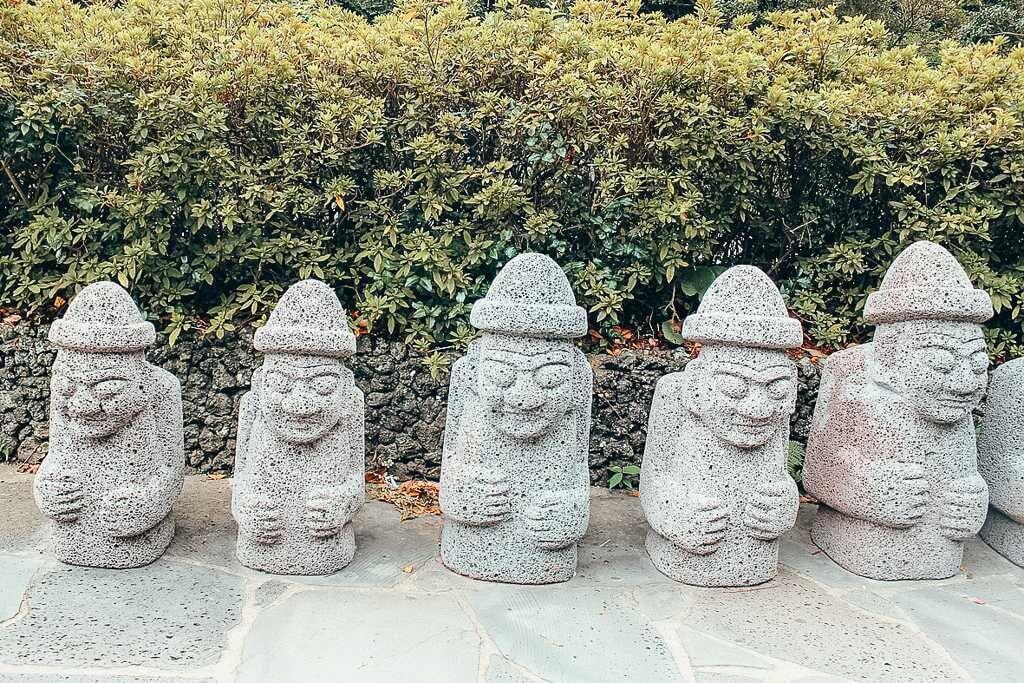
Jeju 5 day Itinerary: Trip Overview
Day 1: Fly to Jeju, see Jeongbang and Cheonjiyeon Waterfall, and explore the Seogwipo Olle Market
Day 2: Climb Seongsan Ilchulbong and explore Manjanggul Cave
Day 3: Jeju Folk Village, Pyeonsan Beach, and Jeju Black Pork BBQ
Day 4: Walk the Jeju Olle trails, Jusangjeolli Lava Cliffs
Day 5: Hike Mt Hallasan
How many days in Jeju
This Jeju itinerary allows for 5 days on the island which I believe is the perfect amount of time. Especially if you’re using public transport!
At a minimum, you’ll need 3 days in Jeju. This will allow you to see the main attractions. If that’s the case for you, leave off days 3 (Folk Village) and 5 (Mt Hallasan) of this Jeju itinerary.
Jeju Itinerary: Day 1
The first day of your Jeju Island itinerary will involve a lot of travel, as it’s the day you arrive on the island.
The easiest way to get from Seoul to Jeju is to take a flight from Gimpo Airport in Seoul to Jeju International Airport.
The flight time is just over an hour, and there are hundreds of flights weekly. I flew with Eastar Jet and would recommend them if you’re looking for a low-cost airline.
Book an early morning flight so that you have the rest of the day to explore.
If you have 5 days in Jeju, it’s best to divide your time between the south (Seogwipo) or the east coast of the island (Seongsan).
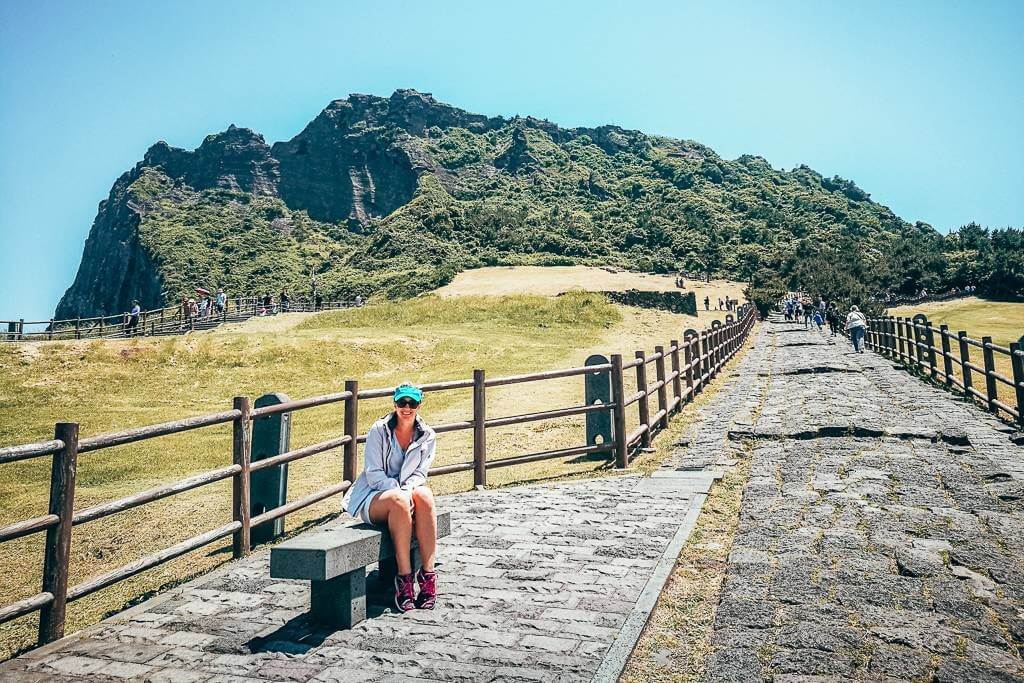
Visit Jeongbang & Cheonjiyeon Waterfall
For those who love chasing waterfalls, Jeju has many of these for you to explore.
The 3 most popular ones include Cheonjiyeon Waterfall, Cheongjeyeon Waterfall, and Jeongbang Waterfall.
Both Cheonjiyeon and Jeongbang are located within walking distance from Seogwipo and don’t require a strenuous hike to get there.
Jeongbang Waterfall is the only waterfall in Asia to fall directly into the ocean, so I was excited to check it out.
- Admission: 2 000 won ($2)
- Operating hours: 9 am – 7 pm
How to get to Jeongbang Waterfall
If you’re staying in the center of Seogwipo, it’s a 30-minute walk to Jeongbang Waterfall. It’s a pleasant route through the harbor where you pass many local restaurants and hidden cafes, so I’d recommend walking vs getting a taxi or bus.
READ MORE: 25+ AWESOME DAY TRIPS FROM SEOUL
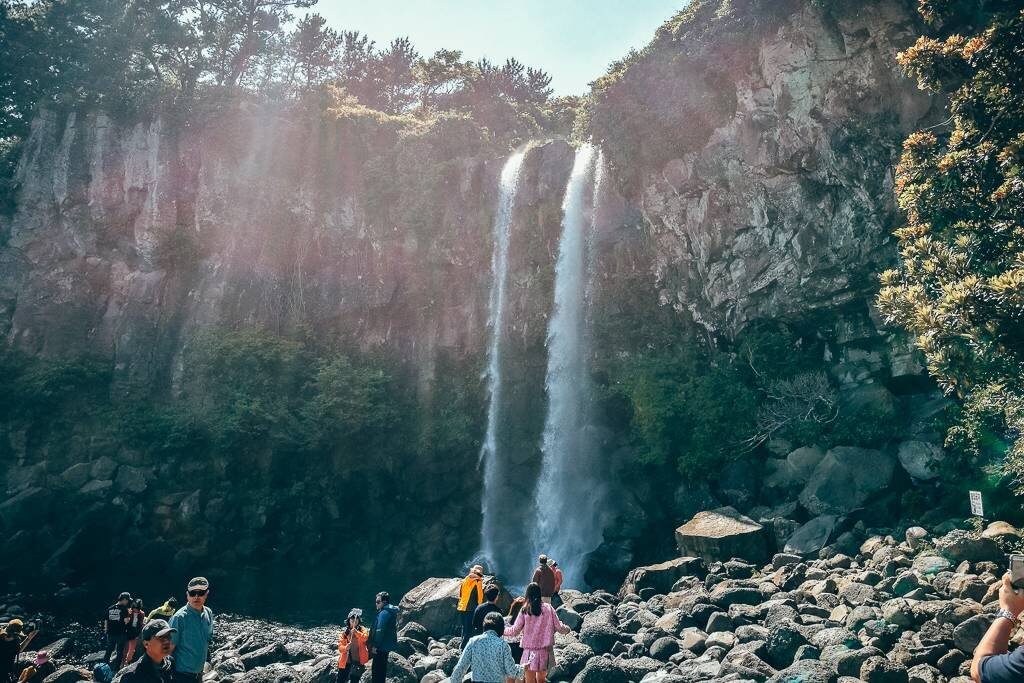
Grab dinner at the Seogwipo Olle Market
Seogwipo Olle Market is the largest traditional market in Seogwipo, consisting of over 200 shops and street vendors.
It offers a variety of local specialties, including seafood, tangerines, dried fruit, fermented side dishes as well as cooked food.
- Opening hours: 7:00 am – 9:00 pm
- Location: 22, Jungjeong-ro73beon-gil, Seogwipo-si, Jeju-do
Jeju itinerary: Day 2
If there’s one day out of this Jeju itinerary that you absolutely cannot miss, it’s day 2! If you have less time on the island, make sure you squeeze in a visit to Manjanggil Cave and Seongsan Ilchulbong.
Manjanggul Cave
Manjanggul Lava Tube is one of the longest cave tunnels in the world. It’s also a UNESCO World Heritage Site.
This lava tube is 13 km long, but only 1 km is accessible to the public. Manjanggul Cave houses a variety of well-preserved natural formations, and the tunnels are lit up with illuminating soft-colored lights.
It does get chilly inside, and it’s advised to wear closed shoes as the floor is slippery and uneven. Of course, you always have the exceptions with ladies walking through the caves in their sky-high heels and short skirts, all trying to get the perfect snap!
- Admission: 2 000 KRW ($2)
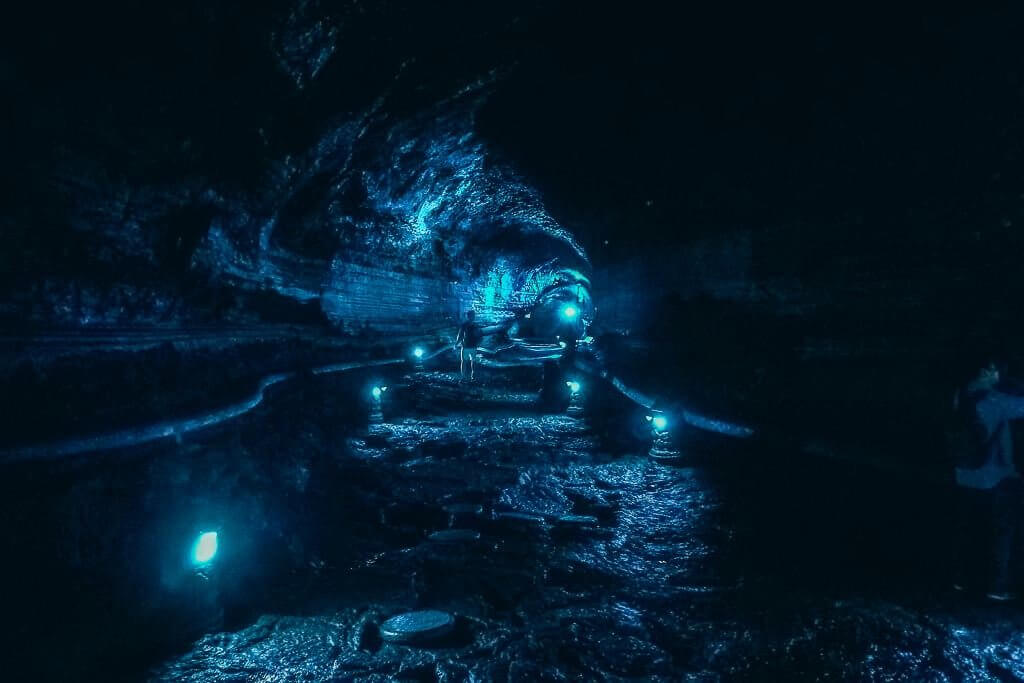
How to get to Manjanggul Cave
From Seogwipo, take bus 101 to Manjanggul Cave Entrance. The trip will take about 1h 30min, but if you board the bus at Seongsan Ilchulbong, it takes 40 minutes.
Once you exit the bus, you need to cross the street and walk about 2.5 km to the entrance of Manjanggul Cave. This was a long walk in the scorching heat, so I’d advise you to take a taxi from the bus stop instead of walking.
Some buses go to the main entrance of the Manjanggul Cave, but they don’t run as frequently, and it’s better to walk the 30 minutes than wait for the bus to arrive.
Top tip: After using public transport to get to Manjanggul Cave, I wish I had opted for a tour like this, which includes pick up from your hotel and a guide. We wasted so much time getting to and from Manjanggul Cave, and it’s worth paying a bit more for convenience.
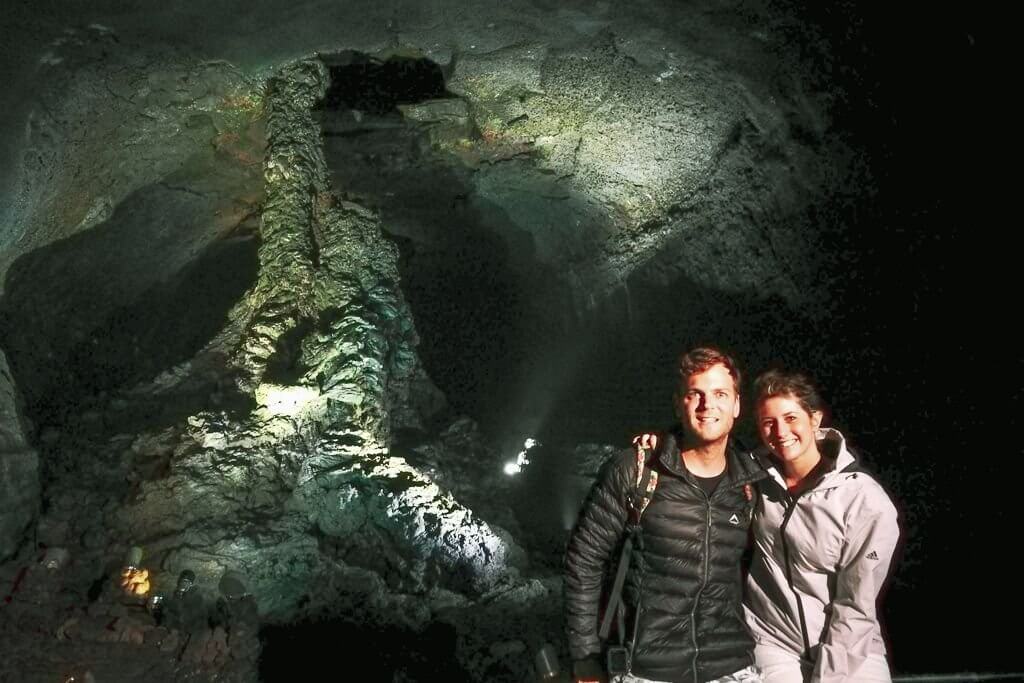
Seongsan Ilchulbong & Jeju Women Divers
Climbing Seongsan Ilchulbong is another UNESCO World Heritage Site and a must-do in your Jeju itinerary.
Otherwise known as “Sunrise Peak”, Seongsan Ilchulbong is an extinct volcano that was formed thousands of years ago after a series of volcanic eruptions.
The climb to the top takes about 30 minutes, with many picturesque spots along the way. At the peak, you’ll get a great view of the crater and Jeju Island. The trail is well-marked, and there are proper steps along the way.
Hiking Seongsan Ilchulbong is one of the best Jeju Island activities, so don’t miss it.
After you’ve completed the climb, you can watch the Jeju Women Divers, also referred to as Haenyeo (sea women).
These divers make their living by harvesting seafood from the ocean floor. Using no diving equipment, they can stay underwater for up to 3 minutes. They’re quite popular in Jeju, and Korea, so watch them do their thing!
- Admission: 5 000 won ($4)
- Operating hours: 7:30 am – 7:30 pm
READ MORE: 40+ THINGS TO PACK FOR KOREA
How to get to Seongsan Ilchulbong Peak
Take bus 101 to Goseong-Ri. Once off the bus, you will notice the scores of people making their way to Seongsan Ilchulbong.
You will also pass many restaurants and cafes along the way, so grab a bite to eat if you’re hungry.
Pro tip: This Eastern Jeju Discovery day tour includes stops at both Seongsan Ilchulbong, Manjanggul Cave, plus you can also check out the Jeju women divers.
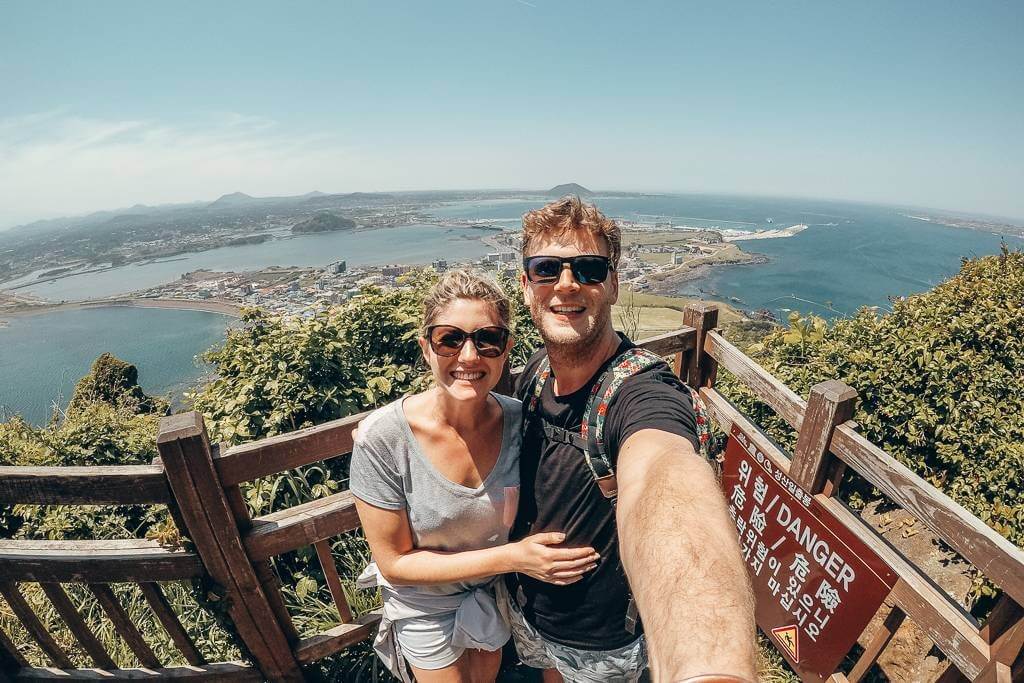
Jeju itinerary: Day 3
Seogwipo will be your base for the first few days of your itinerary for Jeju Island. If you’re using public transport, you can reach the below attractions bus.
Jeju Folk Village
Visit the Jeju Folk Village and travel back in time to explore Korea’s cultural heritage.
More than 100 houses make up the 4 villages inside the Jeju Folk Village. You can spend hours walking through the mazes and learning about the traditional games that were played. It’s a great opportunity to learn more about how the people of Jeju used to live their lives.
- Admission: 11 000 KRW ($10)
- Location: Pyoseon
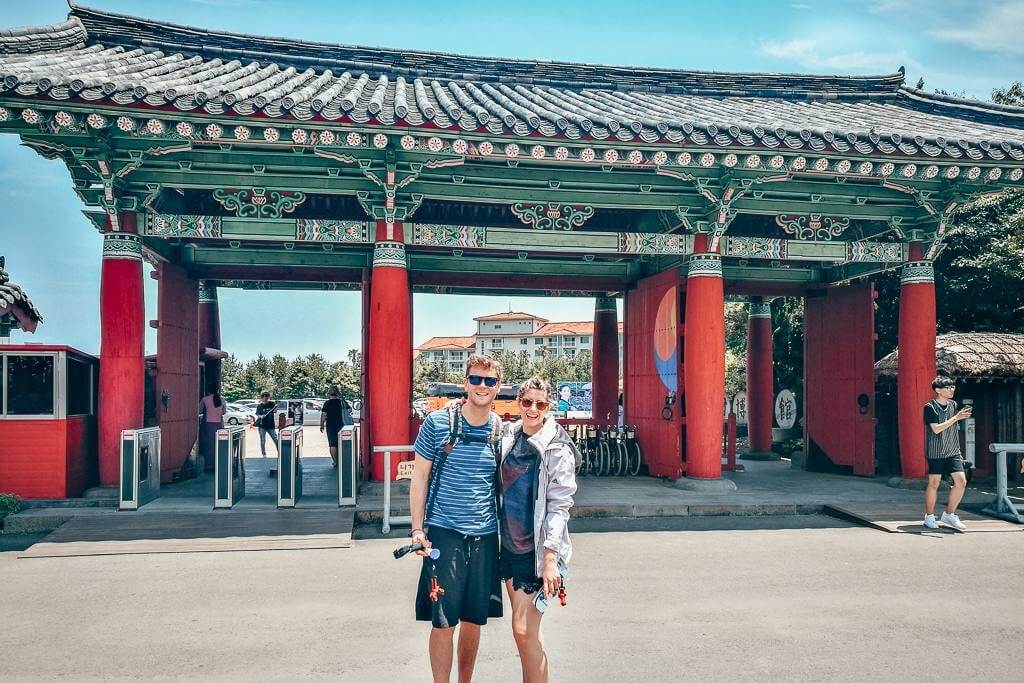
Take a walk along Pyoseon Beach
Jeju Folk Village is situated alongside the coast.
After your visit, head towards the seaside, grab a cup of coffee or ice cream, and take a stroll along the beach before heading back to Seogwipo.
Eat Jeju Black Pork at Tam Gung Restaurant
Today’s the day you get to treat yourself to the famous Jeju Black Pork, a must-do on any Jeju Island itinerary!
The island is renowned for its Black Pork Korean BBQ and these restaurants can be found on every street corner in Jeju.
The meat is in a league of its own, tender and juicy. The name “Black Pork” is derived from the pig’s hair color and not the meat itself.
Because of its exclusivity to Jeju Island, the price for a Jeju Black Pork BBQ is higher than its mainland counterparts. But is it worth it!
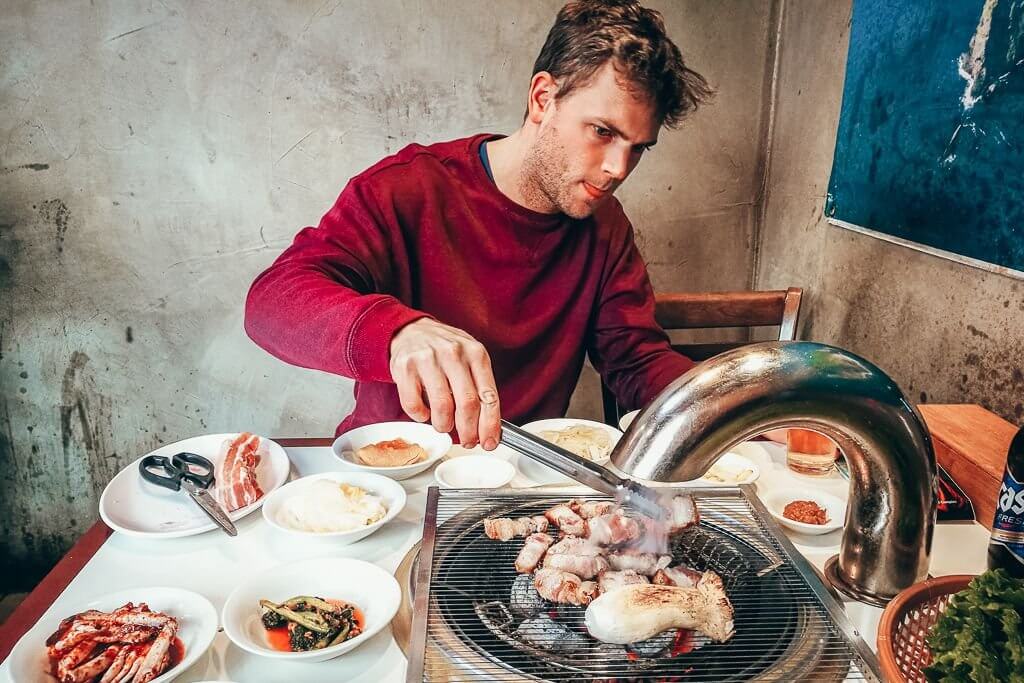
Jeju itinerary: Day 4
Day 3 of your Jeju itinerary is all about nature and getting out and about discovering some truly magnificent Jeju Island attractions.
Explore the Jeju Olle Trails
The Jeju Olle Trails are a series of paths that circle around the outskirts of Jeju Island.
Created by a Korean journalist, the Jeju Olle Trails were inspired by her hike along the Camino De Santiago routes in Spain. There are 26 different routes with varying levels of difficulty.
These trails lead through beaches, villages, mandarin farms, and forests that cannot be accessed by buses or cars. As a result, you have a more authentic and less crowded experience of Jeju Island.
Whilst you can spend your entire vacation making your way around Jeju by means of the Olle Trails, most people choose to walk a specific route for the day. You can also walk only a certain distance before heading on to the next activity.
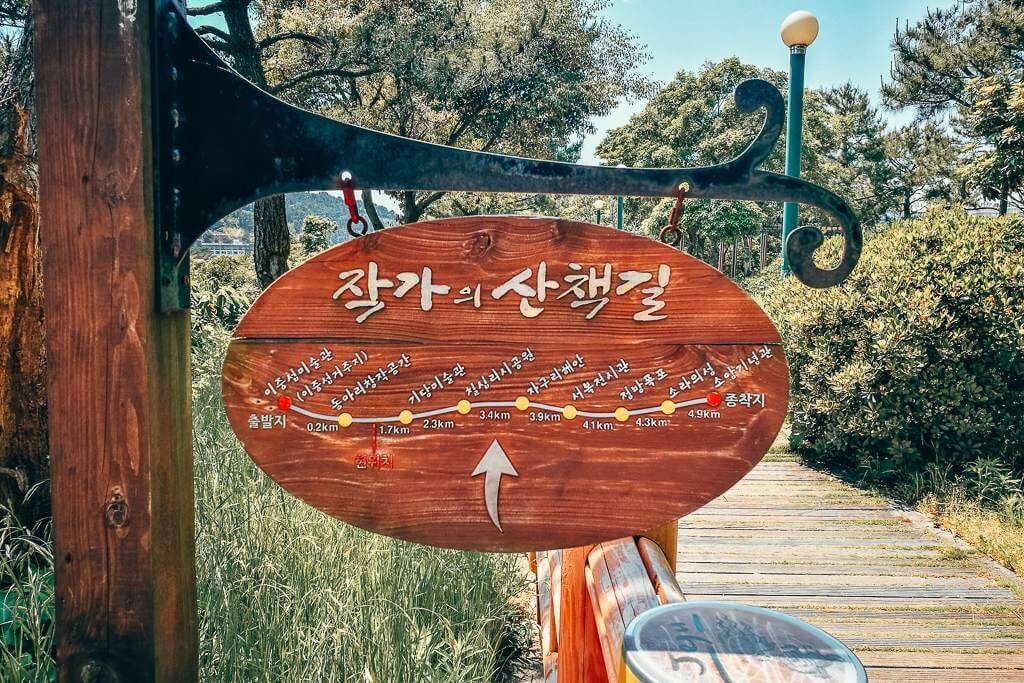
Jusangjeolli Lava Cliffs
The Jusangjeolli Lava Cliffs were formed back in the day when Mt Hallasan erupted. They’re now one of Jeju’s most unique tourist attractions.
It’s located on the coast, and there are several short paths that loop around the park.
Indulge in Jeju Tangerines
Another big attraction in Jeju is its citrus fruit. Lush orchids fill the countryside, and the moderate climate in Jeju is to thank for this.
Tangerines are by far the most prized fruit of Jeju, and they aren’t cheap!
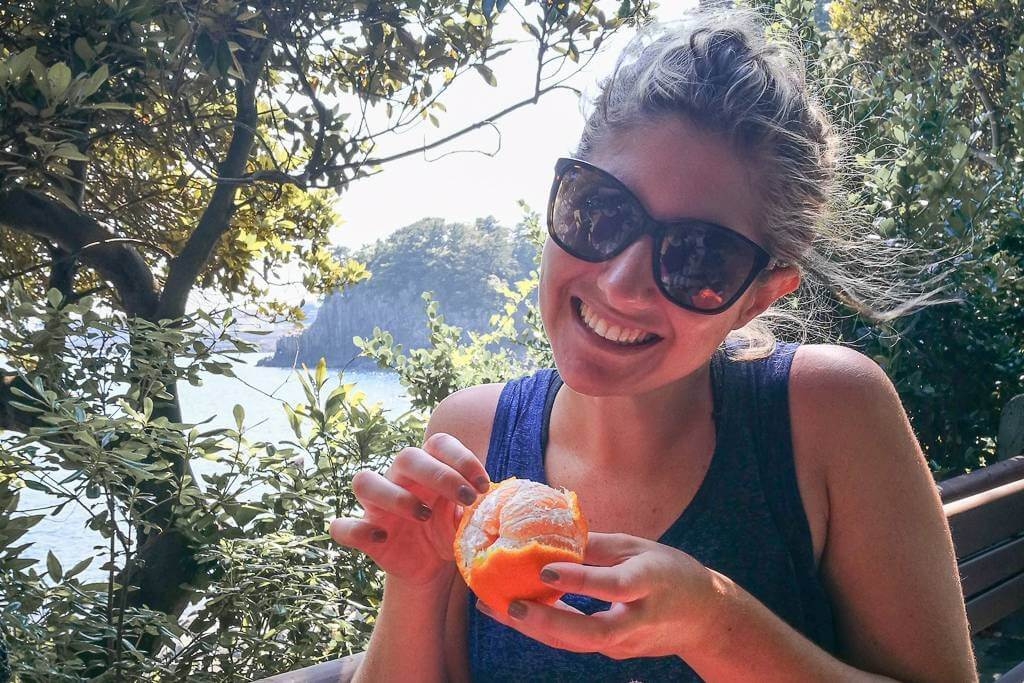
Jeju itinerary: Day 5
Save all your energy for your last day in Jeju Island as you’ll need it!
Hike Mount Hallasan
If you have 5 days in Jeju, Mount Hallasan needs to be on your itinerary!
Sitting at 1 950m, it’s the highest mountain in Korea and attracts thousands of tourists to the island. Mount Hallasan is also an active volcano that forms the bulk of Jeju Island.
You’ll need a full day for your summit climb, and there are various other walking routes around the mountain if you choose not to go all the way to the top. The most popular trail to the peak is Seongpanak.
- Admission: Free
How to get to Mount Hallasan
From the Seogwi Bus terminal, take bus 182 to Seongpanak for about 30 minutes.
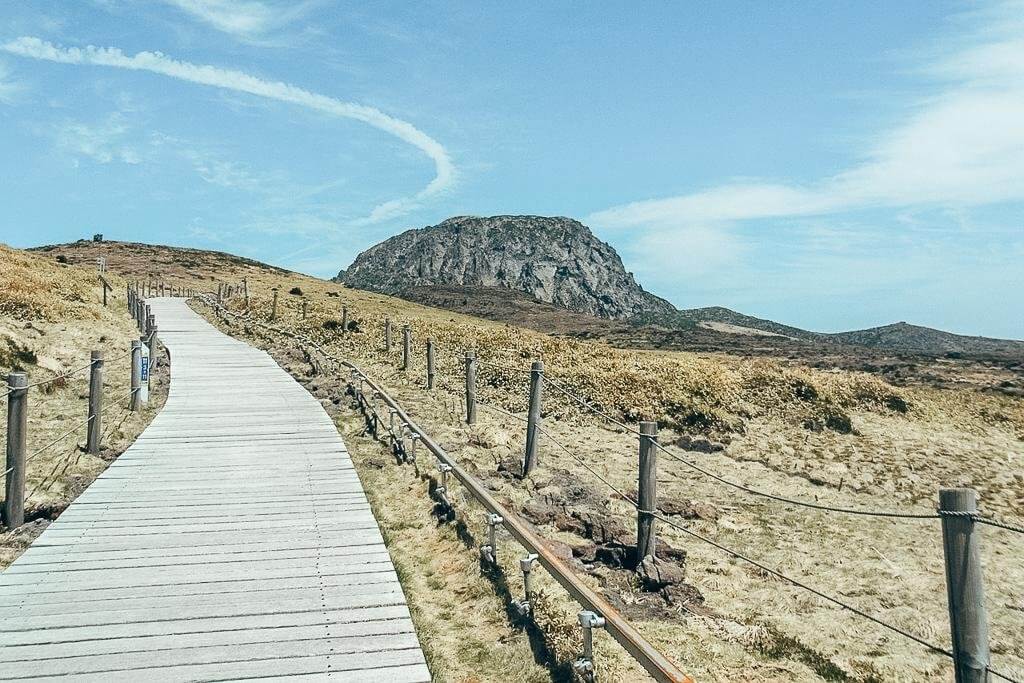
Other things to add to your Jeju Island Itinerary
If you’re struggling to decide what to do on Jeju Island, I don’t blame you! The island is home to some of the greatest attractions in Korea, and you need more than 5 days in Jeju to visit them all.
Take a day trip to Udo Island. The ferry leaves from Seongsan Harbor to Udo Island where you can spend the day exploring Udo on bikes or scooters before heading back to Jeju. You can buy tickets here
Visit one of the many museums on Jeju Island. These include the Hello Kitty Museum, Love Land, Mini Mini Land, Glass Museum, and the Teddy Bear Museum. Yes, Koreans love museums! If you’re traveling with kids these museums are a must-see. Check out the museums and buy your tickets here.
Spend your summer days enjoying the beaches of Jeju. The more popular ones include Hyeopjae, Jungmun, and Samyang. Unfortunately, the beaches are closed outside of summer, so if you visit Jeju in spring or fall, don’t focus on including them in your Jeju itinerary.
Jeju Nanta Show. This is one of the best things to do in Jeju City! The show combines acrobatics, martial arts, music, and culinary skills and is an incredible performance. I saw the performance in Seoul and it’s worth every cent! Tickets need to be purchased in advance, here.
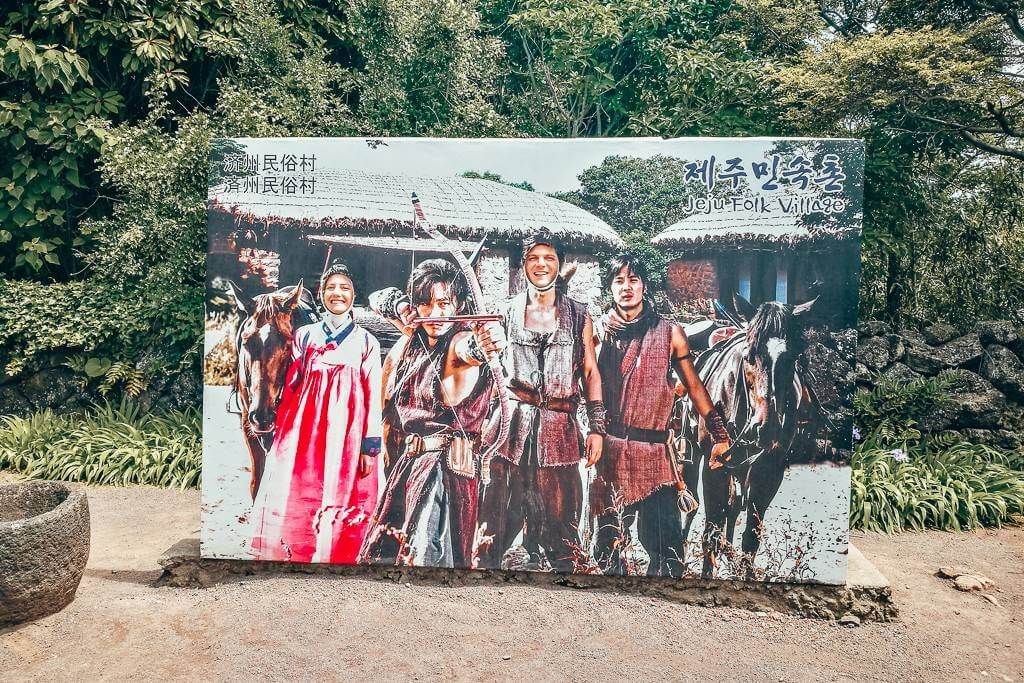
Jeju Island tours
There is so much to see and do in Jeju. If you’re looking to get the most out of your time on the island, check out these awesome tours which include stops at the best attractions in Jeju.
- Jeju UNESCO Site Tour stops at all the UNESCO World Heritage sites in Jeju Island. It’s one of the best ways to see Jeju if you only have a few days to explore.
- Jeju Western Island Exploration takes you to the popular sites on the west of the island including Hyupjae Beach and Cheonjeyeon Waterfall.
- Jeju 3D/2N Tour includes accommodation in a 4* hotel as well as a private vehicle and driver to ensure you get to see the best of Jeju!
Best time to visit Jeju
Korea offers 4 distinct seasons but there are so many things to do in Jeju and so you won’t be short of options, no matter the season.
Winter (December-February): Winter in Korea is cold and you can expect a bit of snow in Jeju, although the weather is warmer than the mainland during this time. Because winter is the off-peak period, there are fewer crowds and accommodation is cheaper.
If you’re visiting Korea in Winter, check out these ski resorts near Seoul!
Spring (March-May): Spring is one of the better times to visit Jeju Island. With sunny skies and pleasant weather, you can enjoy all the outdoor activities on offer. The flowers will be showing off and it’s a great time to get out and explore. However, there are thousands of tourists who visit Jeju during this time.
Summer (June-August): Summer is extremely hot and humid. Hiking or other strenuous activities may be uncomfortable during this time, but you’ll be able to enjoy the beaches (crowded beaches at that!)
If you’re visiting Korea in Summer, check out Naksan Beach – the best beach in Korea!
Fall (Sept-November): Fall is also a great time to visit Jeju Island as it offers warm, sunny days. As with Spring, there is a lot more natural beauty due to the change of the seasons which brings along orange and red leaves and beautiful photo opportunities.

Jeju Island: The Hawaii of Korea
Firstly, Jeju is as different from Hawaii as apples from oranges!
Despite the rumors, Jeju Island is NOTHING like the surfing hotspot of Hawaii. If you’re searching for palm trees, white sandy beaches, and pristine waters, then perhaps island hopping in the Philippines is a better option for you!
However, Jeju is popular for many other reasons, and the unique attractions on the island make it a worthy reason to include it on your Korean bucket list.
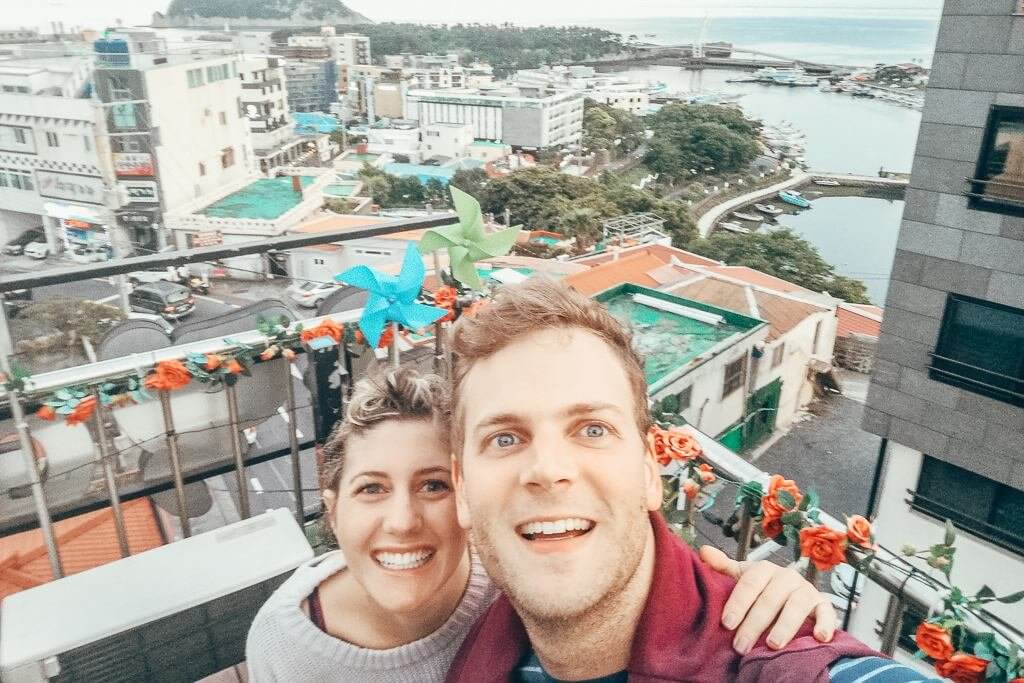
My Thoughts on a 5 days in Jeju itinerary
Jeju will always hold a special place in my heart as it was my first stop before I started teaching English in Korea.
Not knowing anything about Korea, the culture, and the food, I had no idea what to expect, except a “Hawaii” like atmosphere!
I quickly learned that most Koreans cannot speak English, hiking is part of their lifestyle, and the whole “let’s drink cocktails on the beach whilst catching a tan” isn’t a thing here! Here are 24 other strange things about Korea!
I was also amazed by the number of people who flock to Jeju. It’s a tourist hotspot, and every attraction I visited was packed with people as the island is geared for tourism. There’s nothing untouched or mysterious about Jeju.
But that’s what I enjoyed about the island: I learned something new about the way Koreans travel and what they deem to be an amazing vacation. My students often go to Jeju and tell me how much they love it there.
Learning about different countries and cultures continues to amaze me and it’s experiences like these that make one appreciate the differences.
Torn Tackies contains affiliate links. If you make a purchase using one of these links, I may receive compensation at no extra cost to you. See my disclosure for more information.
Have you been to Jeju Island? Do you think it lives up to its name as being the “Hawaii of Korea”? Let me know in the comments section below!
Looking for more Korea travel information? Check out my other posts!
- 29 Things I Wish I Knew Before Backpacking Korea
- Boryeong Mud Festival: 10 Things You Need To Know
- Why Gangchon Rail Bike Is A Must Do
- Getting Lasek/Lasik In Korea
- The Ultimate 7 Days Seoul Itinerary
Pin this!
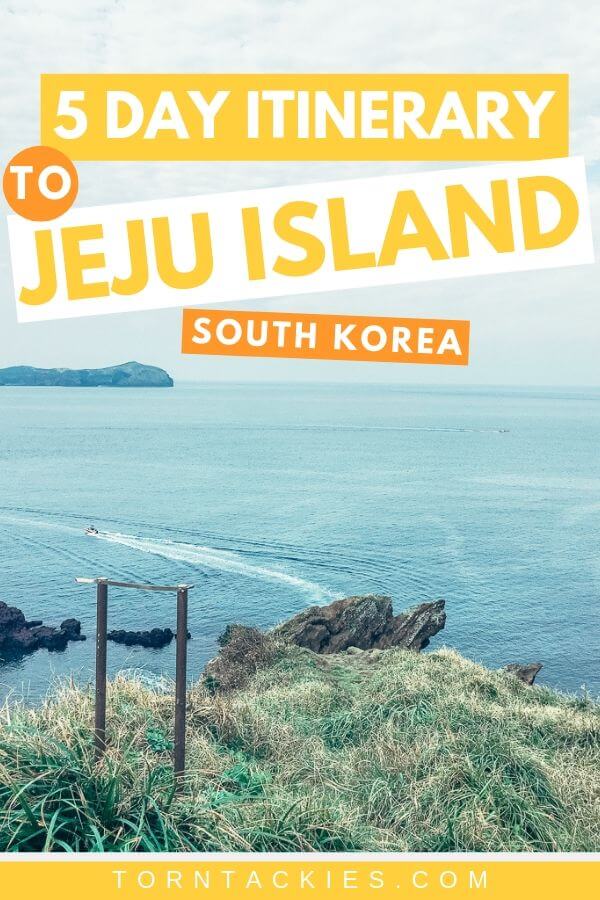
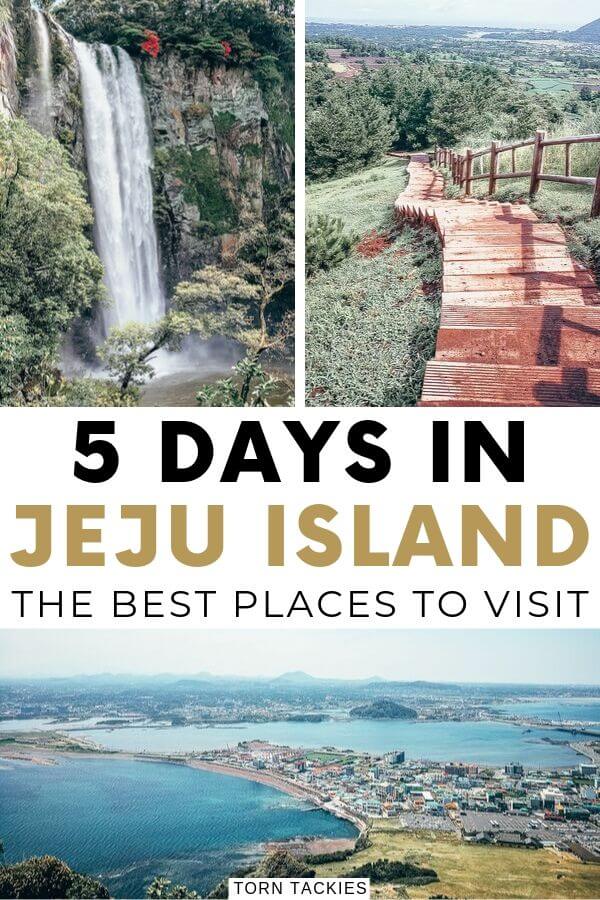

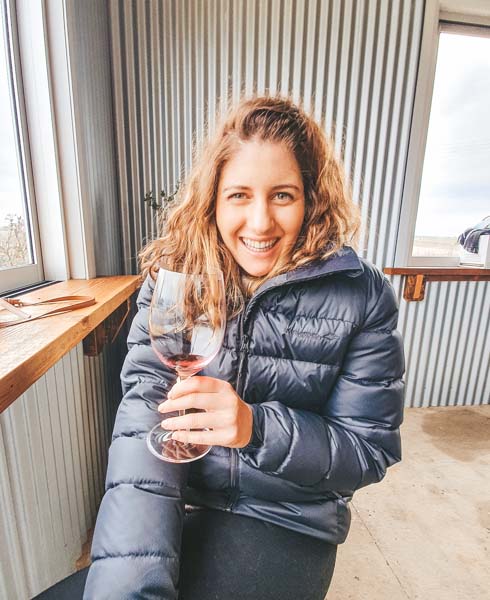
Hi Carryn, looks like you had a great time in Jeju. I like the photos of your trip. Makes me want to go back to Jeju again. Also, seems like you have a lot of good posts on Korea, I will be sure to check those out.